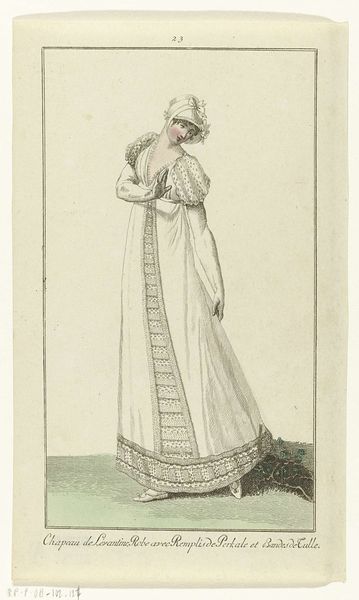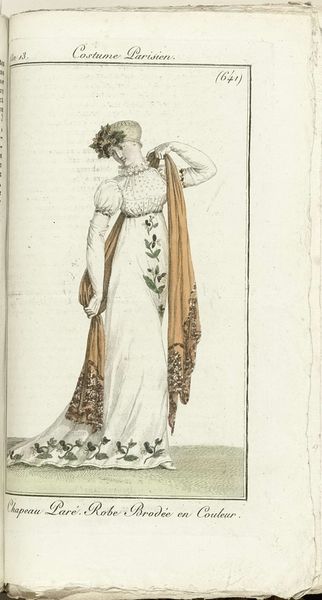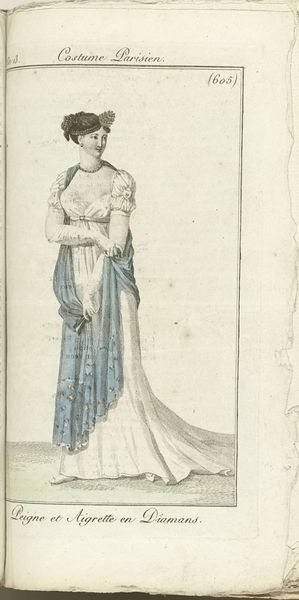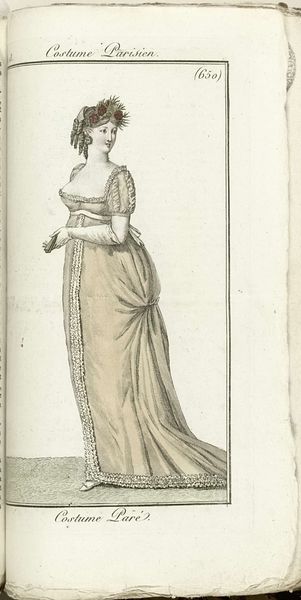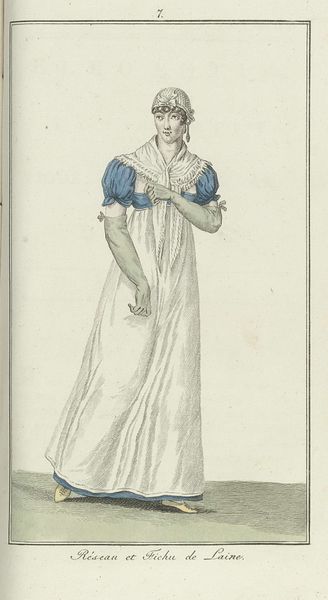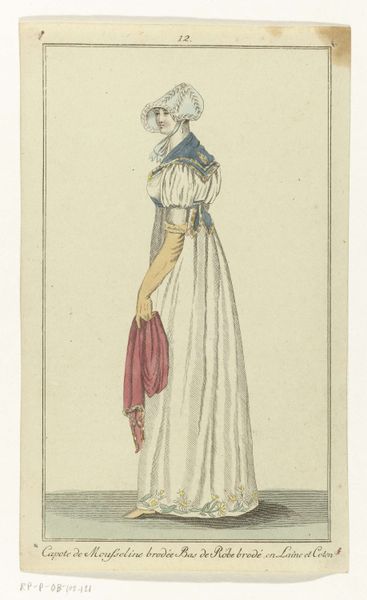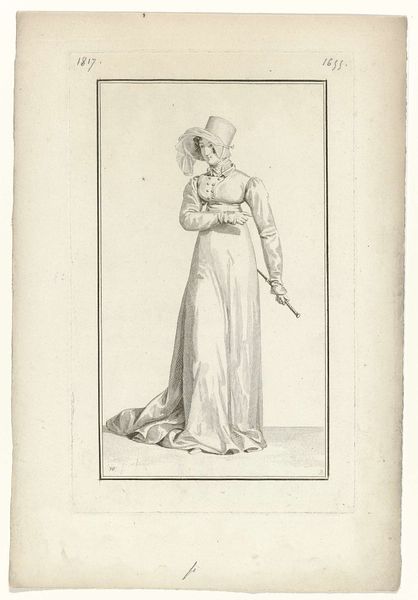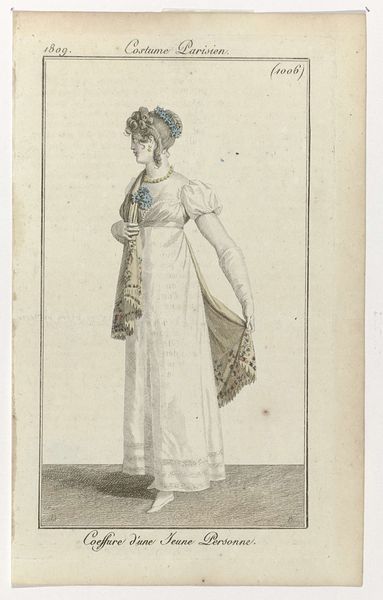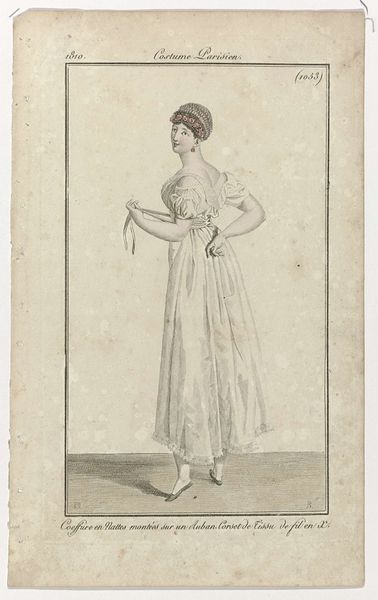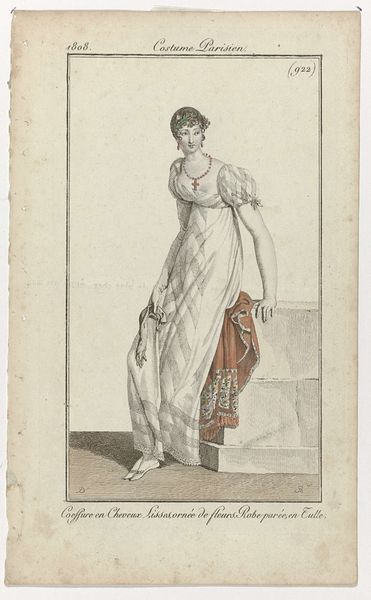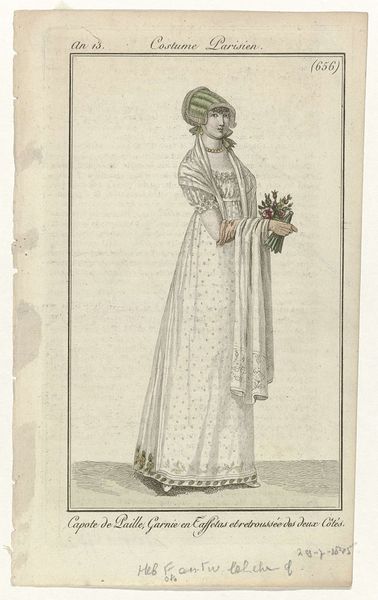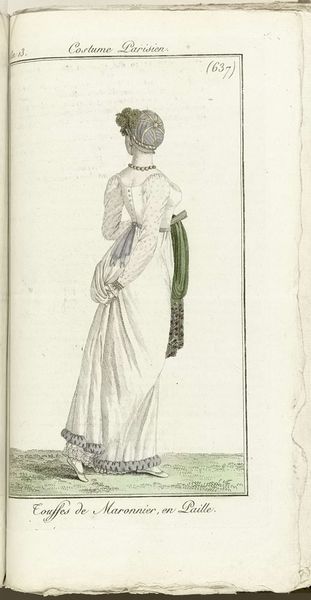
Journal des Dames et des Modes, Costume Parisien, 21 janvier 1804, An 12, (527): Chapeau de Satin (...) 1804
0:00
0:00
pierrecharlesbaquoy
Rijksmuseum
drawing, print, pen
#
portrait
#
drawing
#
neoclacissism
# print
#
pen
#
dress
Dimensions: height 201 mm, width 123 mm
Copyright: Rijks Museum: Open Domain
Curator: This delicate print is a fashion plate from "Journal des Dames et des Modes, Costume Parisien," dated January 21, 1804. It's by Pierre Charles Baquoy. The Rijksmuseum holds this particular example, rendered using pen and print techniques. Editor: The figure has a spectral quality! I immediately notice the stark contrast between the flowing white dress and the almost ghostly pallor of her skin, all offset by the heavier weight of that olive green shawl. There’s an undeniable restraint here. Curator: Let's delve into that restraint. The Neoclassical style dominating fashion during this period moved away from the overt extravagance of the preceding decades. Think of the shift in material production. Cotton muslin became incredibly popular. It was imported, processed, and fashioned into garments that echoed ancient Greek silhouettes. This new aesthetic offered a stark contrast, and allowed for simplicity. Editor: Yes, and those seemingly simple dresses are rife with sociopolitical implications! Consider the era – the French Revolution had a profound impact on every aspect of life, fashion included. These dresses symbolized a rejection of aristocratic excess, signaling a shift toward republican ideals, yet sustained by exploitative colonial practices and power structures that were left intact. Curator: Indeed. The material's origin story reveals this complexity, this dance of austerity and wealth production. Also note the construction itself: the slightly raised waistline, the minimal ornamentation...these details emphasize a kind of idealized natural form, while also creating new industries based around the fast production and consuption of cheaper materials, rather than precious brocades or silks. Editor: Precisely. And let's not overlook how these "simple" styles often subtly reinforced existing social hierarchies! The fabrics, though seemingly plain, were still expensive, making them inaccessible to most women. These designs helped the bourgeois to mark their claim of an emergent class and taste. There's also something to be said about the limited color palette, too. It signals new ideals, like civic duty, which might, today, challenge us to see these portraits beyond fashion and costume. Curator: This has offered some good and layered points for consideration, and hopefully a starting point for reflection. Editor: Exactly. Looking critically is always a valuable exercise, reminding us to engage with beauty consciously and to unearth hidden depths.
Comments
No comments
Be the first to comment and join the conversation on the ultimate creative platform.
